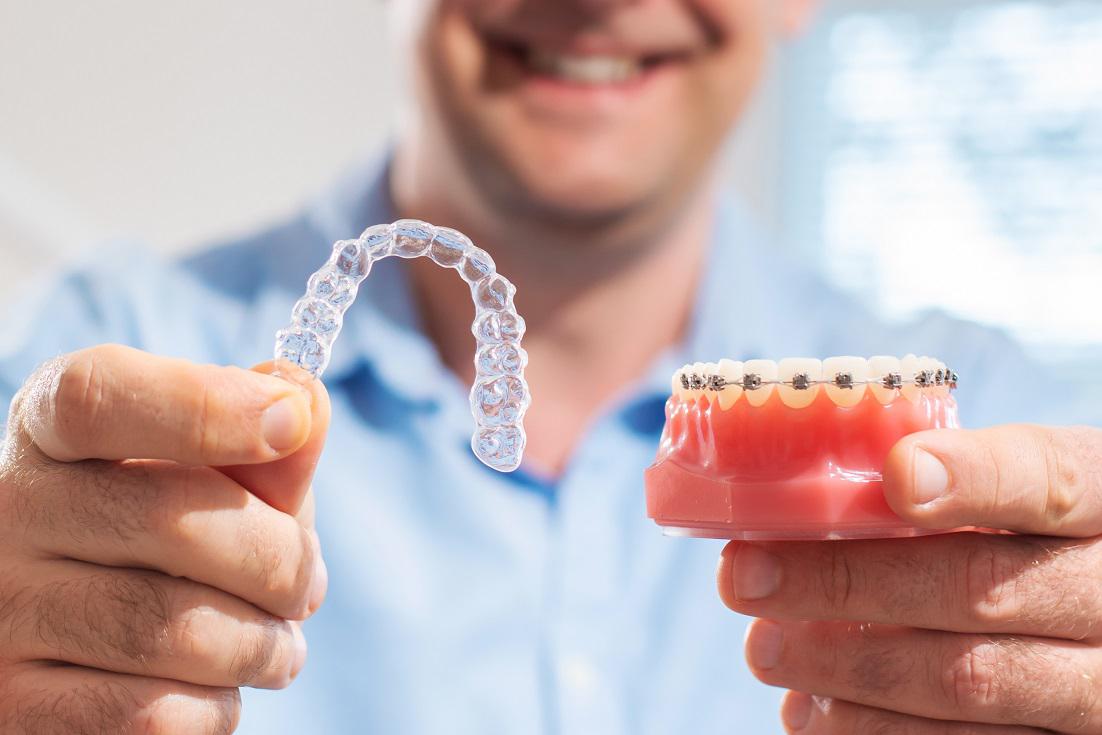Achieving a straight, beautiful smile is a goal shared by many, regardless of age. Fortunately, advancements in orthodontic technology have made it possible to correct misaligned teeth and bite issues more discreetly and comfortably than ever before.
Invisalign® and traditional braces are two popular options for achieving a straighter smile, each with its own unique advantages and considerations. In this blog, we'll explore the differences between Invisalign and braces to help you make an informed decision about which orthodontic treatment is right for you.
Invisalign
Invisalign is a remarkable orthodontic solution that involves a series of clear, detachable aligners to progressively straighten teeth and fix bite problems. These aligners are tailor-made from a smooth, BPA-free plastic material, which makes them almost imperceptible when worn.
Invisalign treatment involves the following steps:
- Consultation: During an initial consultation, your dentist or orthodontist will assess your oral health, discuss your smile goals, and determine if Invisalign will work for you.
- Treatment Planning: Using advanced 3D imaging technology, a customized treatment plan is created to map out the movement of your teeth and predict the final outcome of your Invisalign treatment.
- Aligner Fitting: Once your treatment plan is finalized, several clear aligners will be custom-made to fit your teeth snugly. You'll wear each set for about 1-2 weeks before progressing to the next set in the series.
- Progress Monitoring: Throughout your treatment, you'll have periodic check-ups with your dentist or orthodontist to monitor your progress and ensure that your teeth are moving according to plan.
- Maintenance: Invisalign aligners should be worn for 20-22 hours per day, only removed for eating, drinking (except for water), brushing, and flossing. Proper care and maintenance of your aligners are essential for achieving optimal results.
Benefits of Invisalign
Invisalign offers several advantages over traditional braces, including:
- Discreet Appearance: Invisalign aligners are so discreet that you can wear them with confidence, without worrying about drawing attention to your smile.
- Removability: Invisalign aligners can be taken out, making it easier to eat, brush, and floss with ease. This flexibility allows you to enjoy all kinds of foods and maintain good oral hygiene throughout your treatment.
- Comfort: Invisalign aligners are made from smooth, comfortable plastic material, eliminating the need for bulky metal brackets and wires that can cause irritation and discomfort.
- Predictable Results: Invisalign treatment is carefully planned using advanced 3D imaging technology, allowing for precise control over the movement of your teeth and predictable treatment outcomes.
Braces
For many decades, traditional braces have proven to be an effective method for straightening teeth and correcting bite issues. The procedure involves attaching metal brackets, wires, and bands to the teeth, which are gradually adjusted over time to bring them into the desired position.
The process of getting braces typically involves the following steps:
- Consultation: Your dentist or orthodontist will look thoroughly at your teeth, gums, and jaw to determine if braces are the right treatment option for you.
- Placement of Braces: Once your treatment plan is established, the braces will be affixed to the surface of your teeth using a special adhesive. Wires and bands will be attached to the brackets to apply gentle pressure and guide the movement of your teeth.
- Adjustment Visits: You'll need to visit your dentist or orthodontist periodically for adjustments to your braces, during which the wires will be tightened or replaced to continue the tooth movement process.
- Maintenance: Proper oral hygiene is essential when wearing braces to prevent tooth decay, gum disease, and other oral health issues. You'll need to avoid certain foods that could damage your braces and follow specific oral care instructions provided by your dentist or orthodontist.
Benefits of Braces
Traditional braces offer several benefits, including:
- Effective Treatment: Braces are highly effective for correcting various orthodontic issues, including crowded teeth, spacing issues, overbites, underbites, and crossbites.
- Comprehensive Correction: Braces can address complex orthodontic issues that may not be suitable for treatment with Invisalign alone, providing comprehensive correction and alignment of the teeth and jaw.
- Durability: Braces are made from durable materials that can withstand the forces required to move the teeth into the desired position, making them a reliable option for orthodontic treatment.
- Cost-Effectiveness: In some cases, traditional braces may be more cost-effective than Invisalign, making them a practical choice for patients with budget considerations.
Invisalign vs Braces: Choosing the Best Orthodontic Option
When deciding between Invisalign and braces, it's essential to consider your individual needs, lifestyle, and treatment goals. While both options offer effective solutions for straightening teeth and correcting bite issues, each has its own set of advantages and considerations.
If you value discretion, comfort, and convenience, Invisalign may be the ideal choice for you. However, if you require more comprehensive correction or have complex orthodontic issues, traditional braces may offer the best results.
Consulting with a qualified orthodontist like ours is the first step! We can evaluate your oral health, discuss your treatment goals, and recommend the most suitable option based on your individual needs and preferences.


